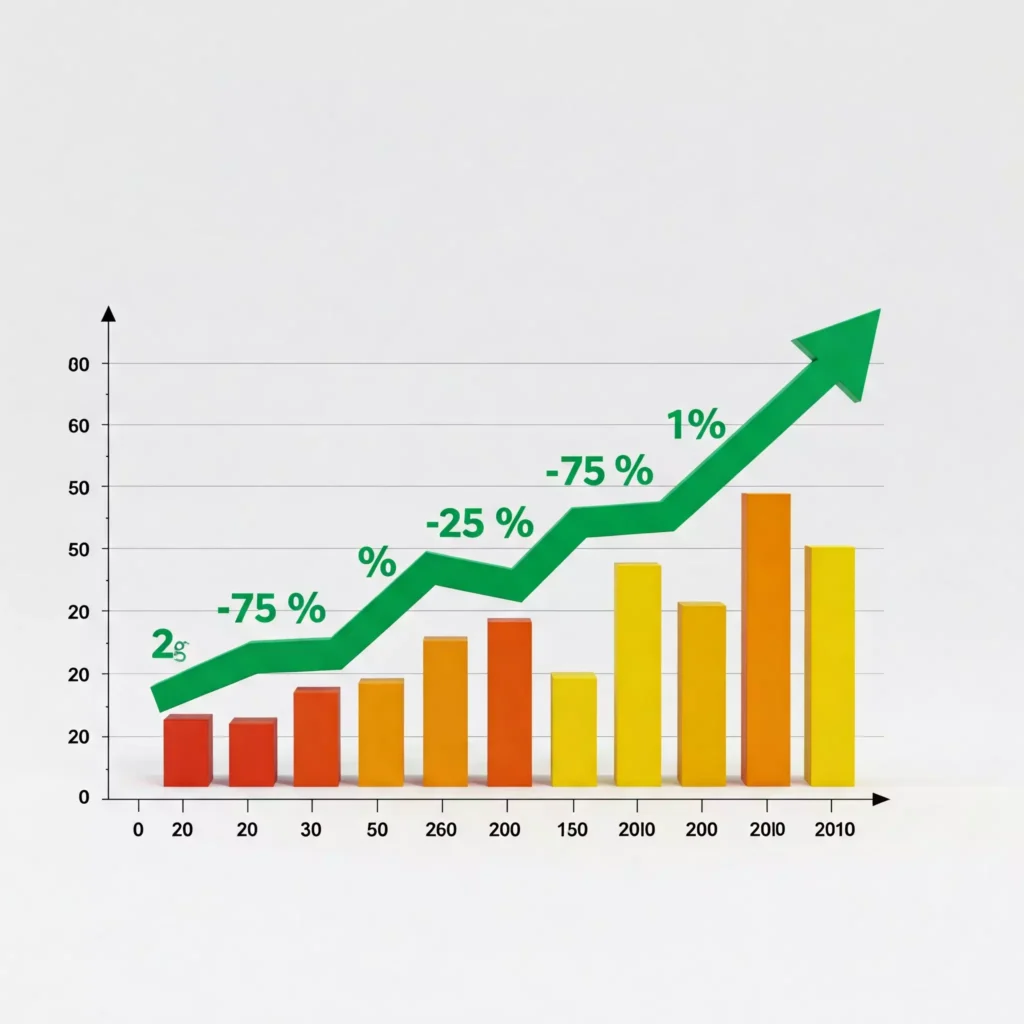In many areas of life, percentages are applied repeatedly — not just once. This is where compound percentage comes into play.
Whether you’re tracking investments, business revenues, or product discounts, knowing how to compute compound percentages is essential.

Our Compound Percentage Calculator helps you quickly and accurately determine the cumulative effect of repeated percentage changes over multiple periods.
What is Compound Percentage?
Compound percentage refers to the calculation where a percentage change is applied multiple times, with each change based on the updated value from the previous period.
It’s a way to measure growth on growth or decline on decline over time.
Unlike simple percentage change, compound percentage takes into account that each new period starts with the modified (new) value.
Formula for Compound Percentage
The general formula to calculate the final value after a repeated percentage change is:
\( \text{Final Value} = \text{Initial Value} \times \left(1 + \frac{\text{Rate}}{100}\right)^{\text{Periods}}
\)
Where:
-
Initial Value = Starting number
-
Rate = Percentage change per period (positive for growth, negative for decline)
-
Periods = Number of times the percentage is applied
Real-World Examples of Compound Percentage
Let’s explore how compound percentages are used in practical, real-life situations:
1. Investment Growth Example
Suppose you invest $5,000 in a savings account with an annual interest rate of 4%, compounded yearly for 5 years.
Using the formula:
\[
\text{Final Value} = 5000 \times \left(1 + \frac{4}{100}\right)^5
\]
\[
\text{Final Value} = 5000 \times (1.2166529) = 6083.26
\]
After 5 years, your investment grows to $6,083.26 without adding any extra money.
2. Salary Hike Over Years
Imagine you receive a 5% salary increase every year.
Your starting salary is $40,000, and you want to find your salary after 3 years.
\[
\text{Final\ Salary} = 40000 \times \left(1 + \frac{5}{100}\right)^3
\]
\[
\text{Final\ Salary} = 40000 \times (1.157625) = 46305
\]
Your salary after 3 years will be $46,305.
3. Repeated Discounts on a Product
A store offers a 20% discount on a jacket, and after a week, an additional 10% discount is applied on the discounted price.
Let’s calculate the final price if the jacket’s original price was $100:
First discount:
\[
\text{Price\ After\ First\ Discount} = 100 \times \left(1 – \frac{20}{100}\right) = 100 \times 0.8 = 80
\]
Second discount:
\[
\text{Final\ Price} = 80 \times \left(1 – \frac{10}{100}\right) = 80 \times 0.9 = 72
\]
After both discounts, the jacket costs $72 – not $70, because the second discount applies on the already discounted price.
4. Depreciation of a Car
A car loses 15% of its value every year.
If the original value of the car is $30,000, what will be its value after 4 years?
\[
\text{Final\ Value} = 30000 \times \left(1 – \frac{15}{100}\right)^4
\]
\[
\text{Final\ Value} = 30000 \times (0.85)^4 = 30000 \times 0.52200625 = 15660.19
\]
After 4 years, the car’s estimated value would be around $15,660.19.
Why Compound Percentage Matters?
Understanding compound percentages is vital because:
-
Growth compounds — small increases accumulate into significant results over time.
-
Declines compound too — losses can become much bigger if ignored.
-
Accurate financial planning — saving, investing, or calculating returns depends on understanding compounding.
Without accounting for compounding, predictions about future values would often be significantly inaccurate.
Final Thoughts
Mastering compound percentages allows you to better understand financial growth, repeated changes in values, and more.
Instead of complex manual calculations, you can use our Compound Percentage Calculator to quickly see the final results of repeated percentage changes — for investments, business, personal finance, and more.
Start exploring compound growth today and see how small changes can create big outcomes over time!
